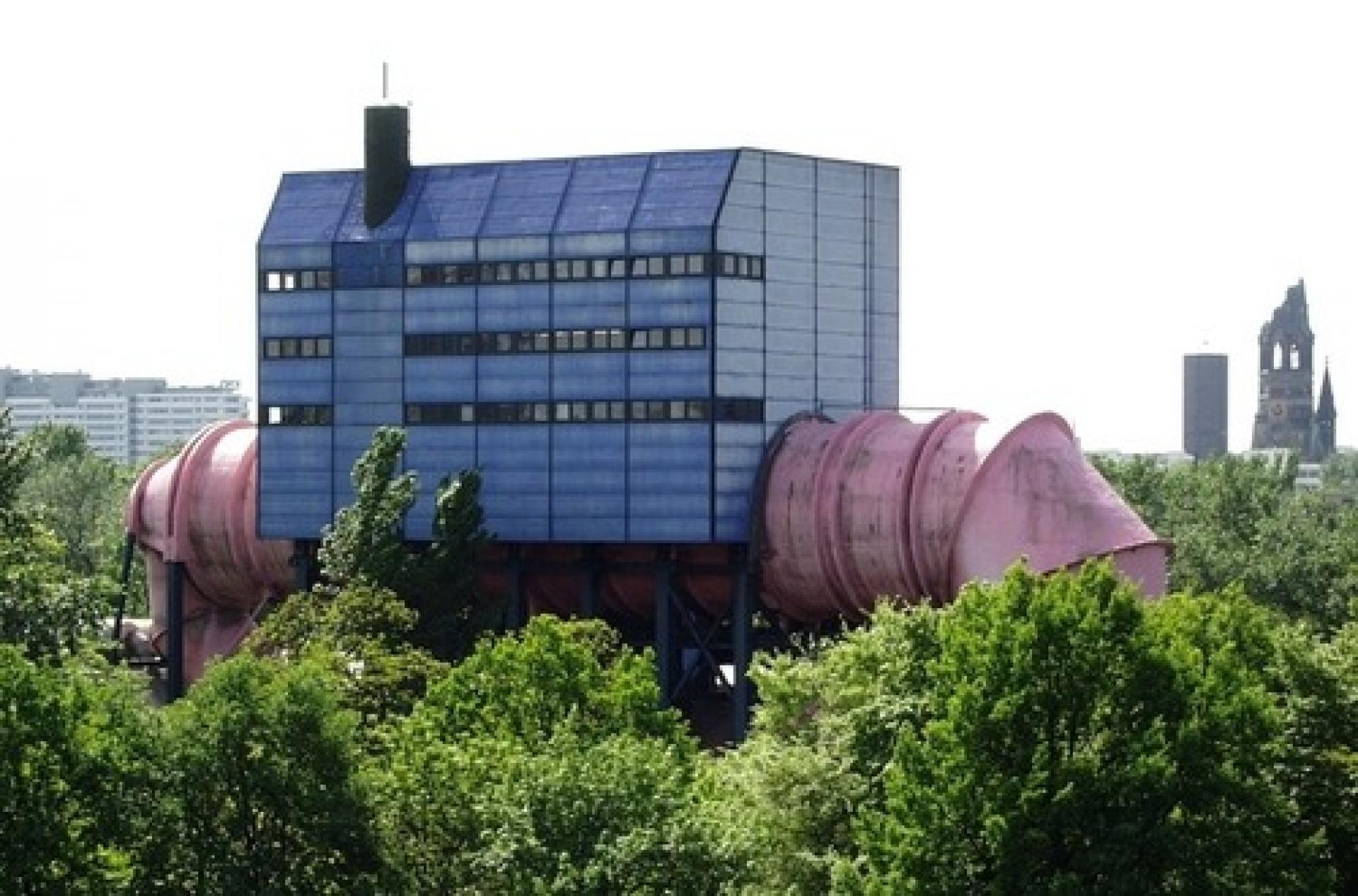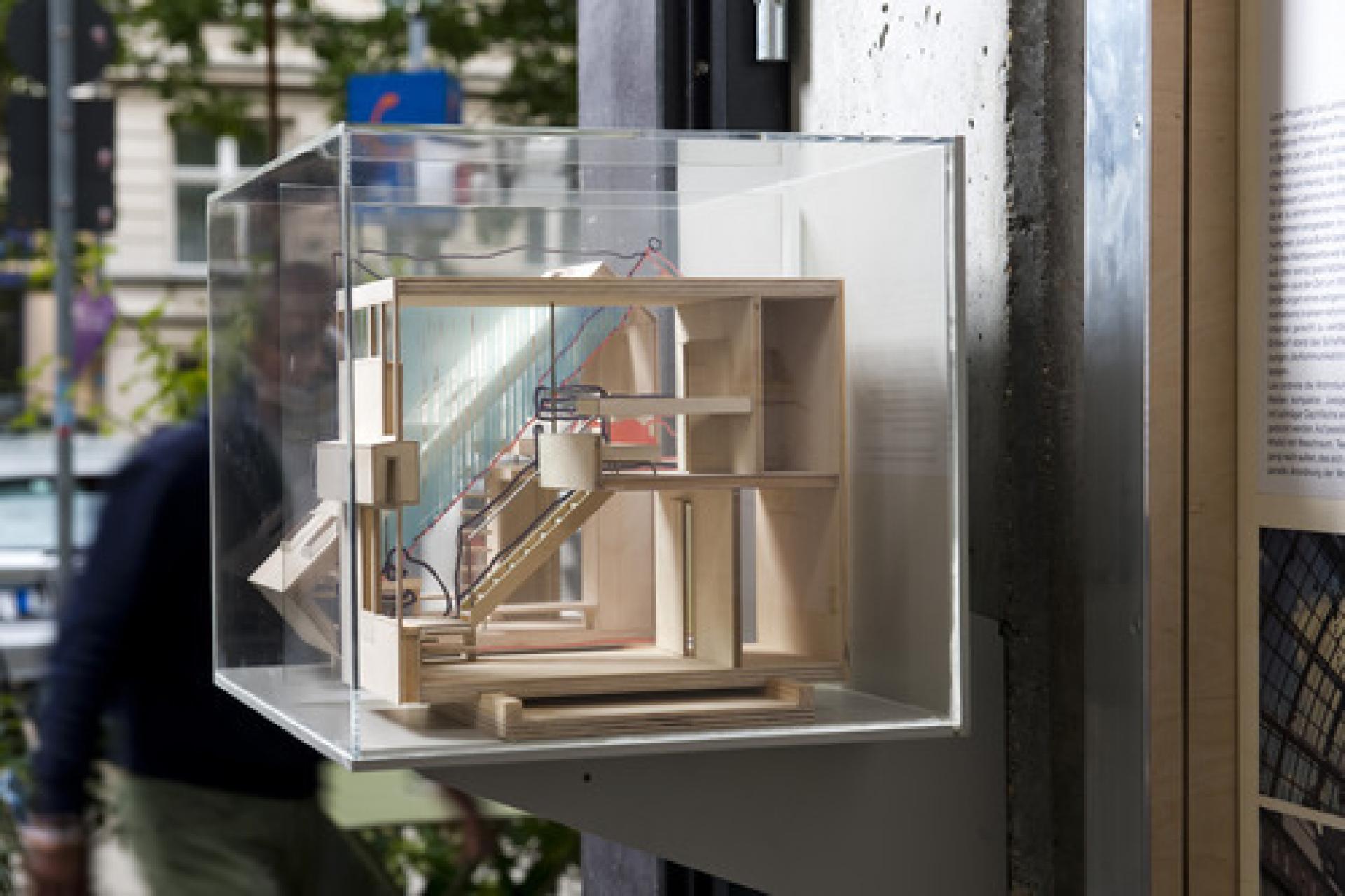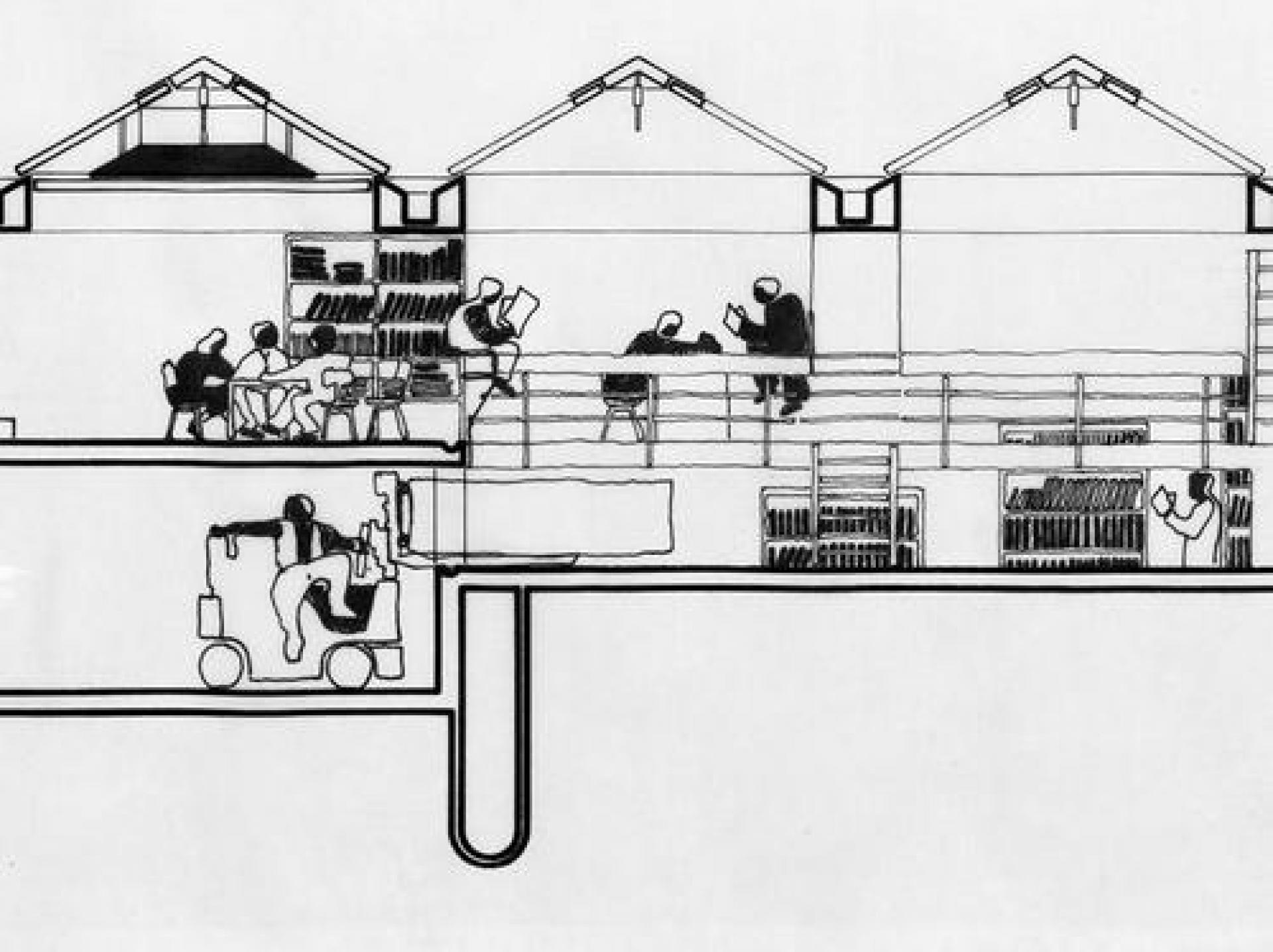Ludwig Leo: Eight Reasons To Love This Book And One To Cry Out Loud
Ludwig Leo - Ausschnitt. Edited by BARarchitekten (Antje Buchholz, Jack Burnett-Stuart, Michael von Matuschka, Jürgen Patzak-Poor) and Gregor Harbusch, 2013.

Firstly, anybody who crossed Berlin by S-Bahn from the Zoo station towards Hauptbahnhof has seen a massive light blue and pink silhouette on the left. This is the Umlauftank 2 and it was erected between 1967 and 1974 as a research facility for the Technical University. This book is the only monograph about its creator, Ludwig Leo (1924-2012), and provides essential information about a Berlin landmark and an architect who is revered by many of his colleagues, but ignored by the rest of the world.

Umlauftank | Photo courtesy Technical University Berlin
Secondly, architecture books are usually expensive. Ausschnitt on the other hand is available for ten euros plus shipping and brilliantly demonstrates how a clever, informative and well-designed architecture book doesn’t have to be pricey. It is packed with images, in total more than 100 including sections, which explain Leo’s architecture and elaborate on its details - unlike certain coffee table books full of wide angle lifestyle photographs without any explanations whatsoever.
Thirdly, Ausschnitt is also the catalogue of a tiny but informative exhibition which took place on less than six square metres in the Gallery die Raum and was curated by BARarchitekten together with the architecture historian and Leo expert Gregor Harbusch. This video exhibit with animated technical drawings of Ludwig Leo is particularly noteworthy. The exhibition is now closed, but the book gives you a very good idea of what it was about.

Die Raum with Leo’s pink blue design on the door | Photo Jan Windszus
Fourthly, the exhibition as well as the book has been supported by Stiftung Wüstenrot, a German foundation which has been funding the restoration and preservation of seminal German architecture including the Haus Schminke by Hans Scharoun, the Kanzlerbungalow by Sep Ruf and the Meisterhäuser of the Bauhaus in Dessau. These masterpieces may have disappeared without the foundation’s help. Up next is the aforementioned Umlauftank. Its pop colours are washed out and the building overall is in a sad state.
Fifthly, Ludwig Leo’s architecture was the expression of a belief in a high-tech future paired with an engineering genius which exuded invention, fun and usability all at the same time (not the meaningless curved pseudo-tech we presently often find ourselves exposed to).

Sporthalle Charlottenburg, 2013 | Photo Jan Windusz
Sixthly, Ausschnitt, which means ‘excerpt’ or ‘detail’ in German, focuses on four of Leo’s projects, a boathouse and training centre for lifesavers (DLRG-Zentrale in Berlin-Spandau), an indoor sports complex (Sporthalle in Berlin-Charlottenburg) as well as a laboratory school (Laborschule in Bielefeld) and a country hostel for school classes (Landschulheim am Solling in Holzminden) - the latter two unrealised. Thus the book’s editors cleverly establish Ludwig Leo as an architect who was able to tackle widely diverging programmes with varying spatial and technical requirements.

Model of the living unit for the Landschulheim am Solling | Photo Jan Windusz
Seventhly, this book is great because Ludwig Leo reminds us of a time where architecture was still synonymous with the word experiment.
Eighthly, Ausschnitt gives me the opportunity to steal an idea of Wolfgang Pehnt who in 2004 wrote an article in a similar manner about the great Egon Eiermann. But that is another story.
Ninthly, … well, the book has one problem: it is only in German. But architecture is a universal language and as long as you can read a plan, decipher a section, speculate on a façade, or just enjoy looking at one, chances are you will like it. Besides, architects never read the expensive books they put on their coffee tables, they just look at the images. So do yourself a favour and buy this book!
- Thibaut de Ruyter
Ludwig Leo - Ausschnitt Edited by BARarchitekten (Antje Buchholz, Jack Burnett-Stuart, Michael von Matuschka, Jürgen Patzak-Poor) and Gregor Harbusch on behalf of Stiftung Wüstenrot. 16,4 x 23,5 cm, 48 pages, 109 illustrations, softcover, 2013. BARarchitekten.

Detail drawing of the unrealised Laborschule Bielefeld which also constitutes the book’s cover | AdK Archive


